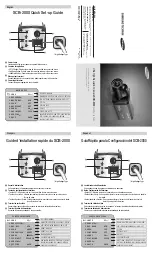
8
8
Model 300MB-SD CommCenter Series D1
Federal Signal
www.fedsig.com
An Overview of the Model 300MB
Chassis Description
The CommCenter is assembled in a black, powder-coated, steel, two-piece housing.
The cover is attached to the housing with four screws, two along each long edge of
the enclosure. The rear of the housing incorporates two field-wiring compartments
baffled off from the printed circuit board area. One compartment is for the connection
of the Class II power and signal lines, and the other is for the connection of the Class I
power lines. These areas are provided with knockouts to allow the external wiring to
enter the unit through appropriate installer-supplied bushings.
Input Configuration
The CommCenter can be configured for remote activation in four ways:
• Normally open latching contacts
• Normally open momentary contacts
• Normally closed latching contacts
• Normally closed momentary contacts
The CommCenter is factory-set to be activated by closing a normally open latching
contact between the associated input and circuit ground. When activated, the
message continues to loop and repeat. It stops as soon as it is deactivated. When
configured for momentary activation, the message continues to loop and repeat until
the input is deactivated. When the input is deactivated, it plays the entire message
before stopping.
Each of the six inputs can be configured individually by moving a two-position jumper
on a three-position header. See Table 2 for a list of the priority tones, their associated
jumper designations, and their silkscreened label printed circuit board.
Table 2 Model 300MB Series D motherboard
MESSAGE
JUMPER
MARKING
JUMPER
MARKING
PRIORITY
TONE1
J9
NO NC
J12
R M
PRIORITY
TONE 2
J10
NO NC
J14
R M
PRIORITY
TONE 3
J11
NO NC
J13
R M
PRIORITY
TONE 4
J5
NO NC
J8
R M
PRIORITY
TONE 5
J4
NO NC
J7
R M
PRIORITY
TONE 6
J3
NO NC
J6
R M
NOTES:
NO NC configures an individual channel to interface
to normally open (NO) or normally closed (NC)
contacts.
R M configures an individual channel to interface to
a latched contact (R) or a momentary contact (M).









































